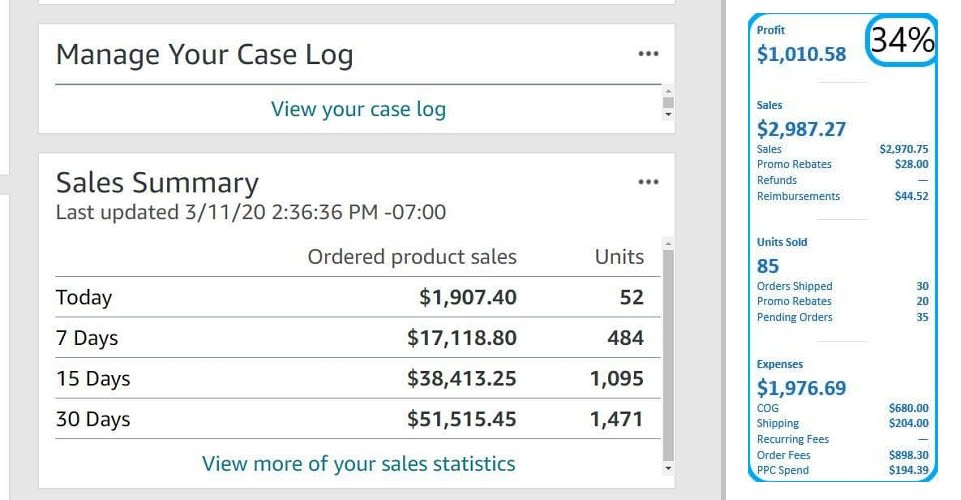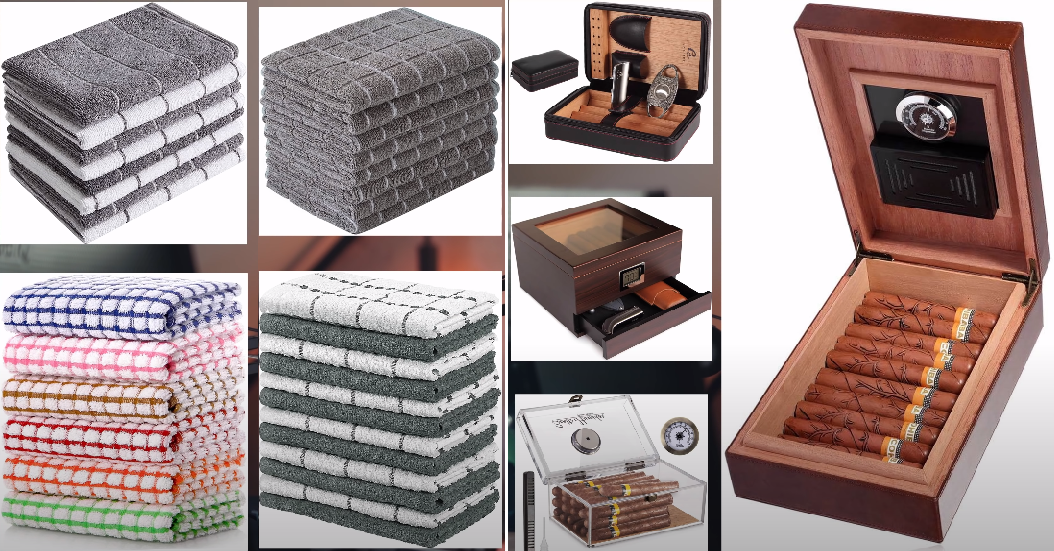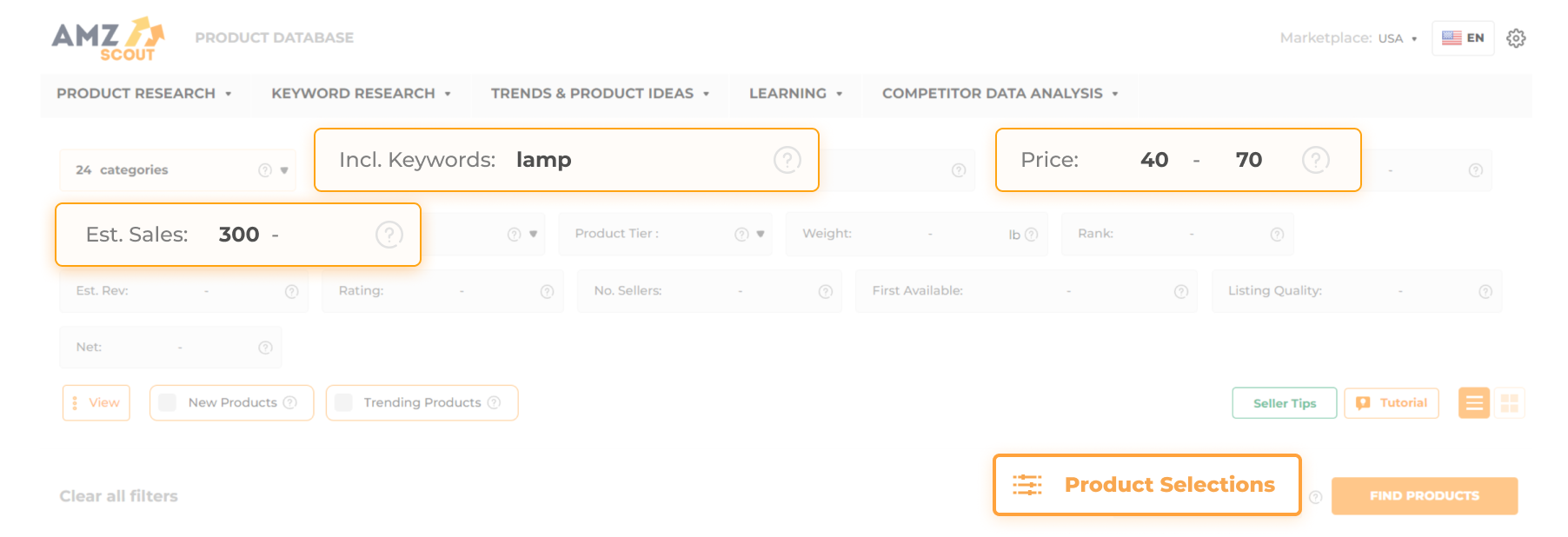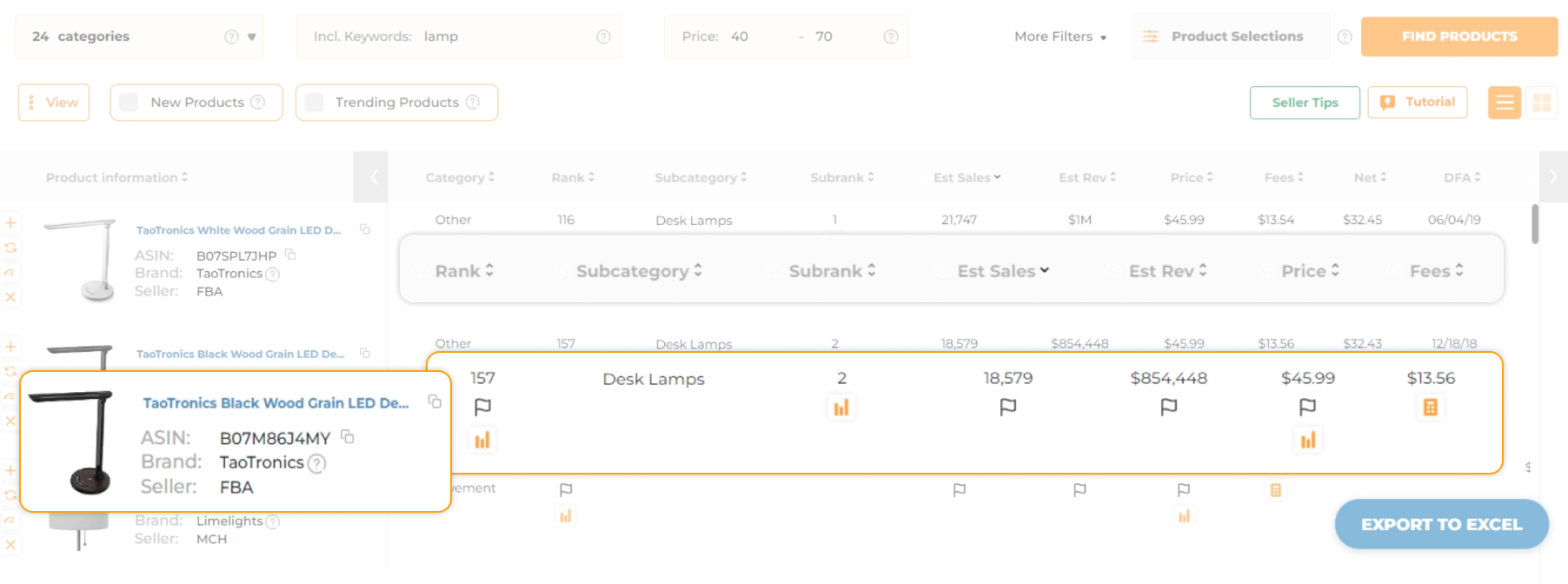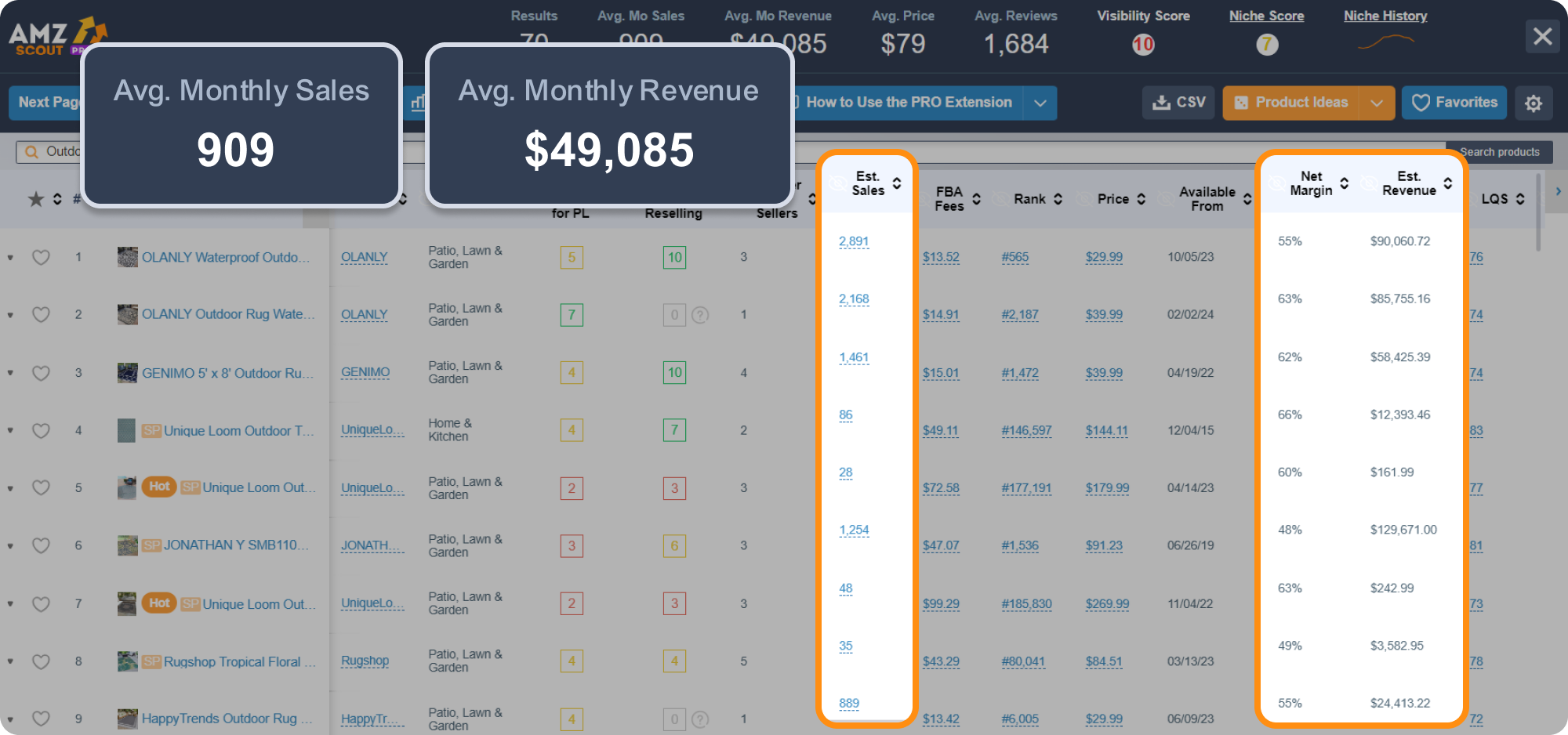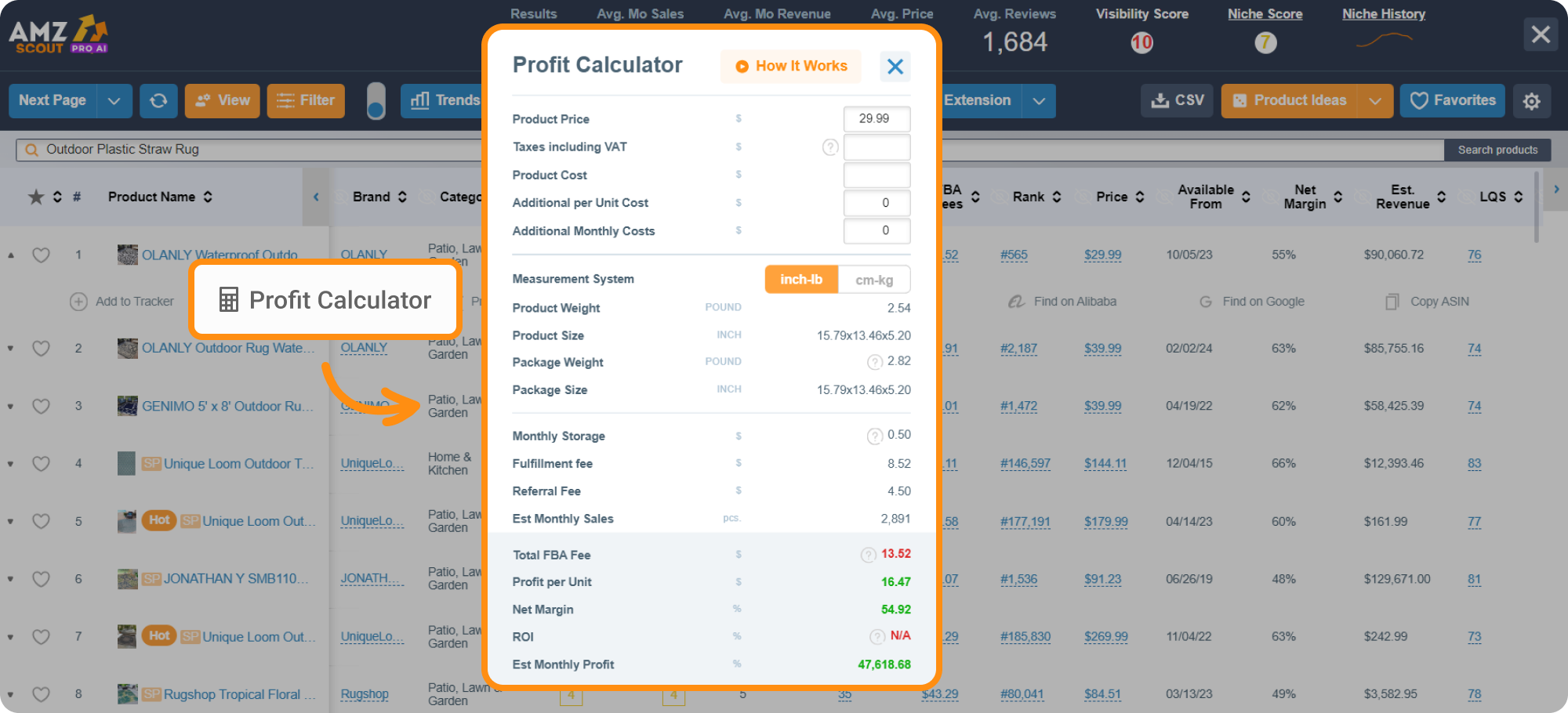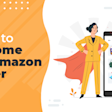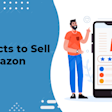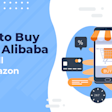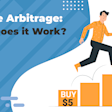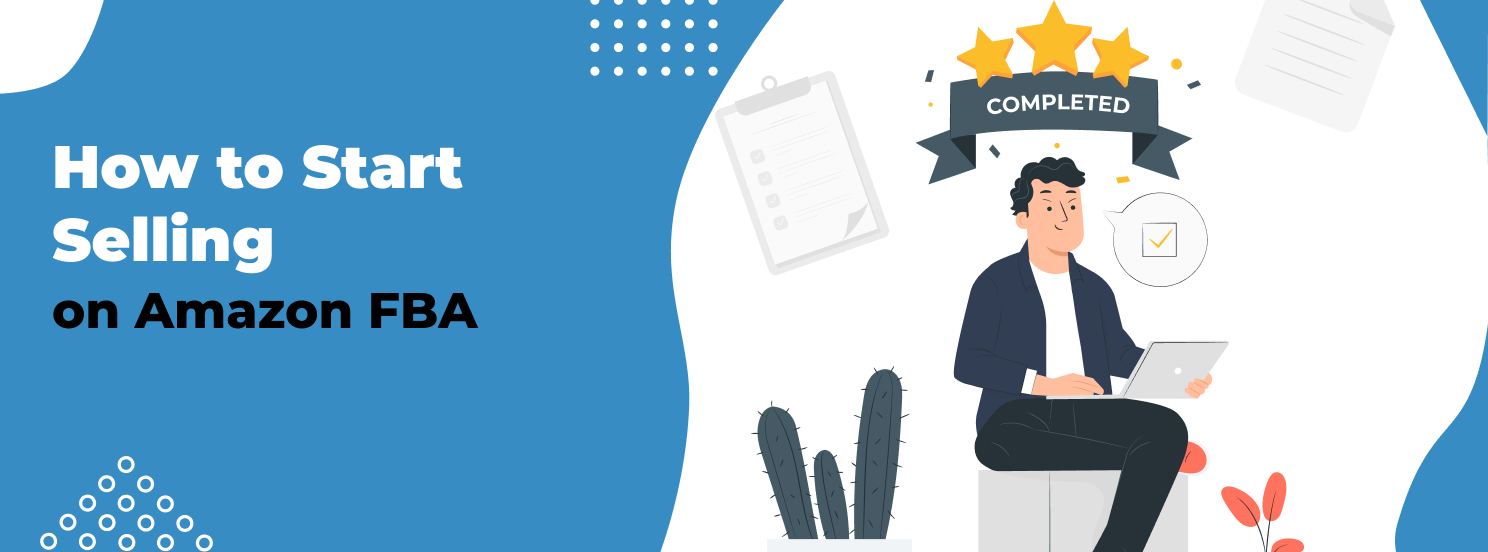
How to Start Selling on Amazon FBA - From A to Z
Here at AMZScout, we’re all about inspiring people and want to show you how anyone can start their own Amazon business. So, we reached out to a successful seller Dan Rodgers so he could share his story with you.
About the Author
Dan started his private label business when he was still in South Africa. He sold his car to fund his first order and has grown the business substantially. The cost of his first inventory order was $3,000. Now, a single order can cost $33,000. Notably, he has taken a review banned product from doing $0 to doing $20,000 in 7 days.
He has sold on Amazon for over 4 years, in both North America and Europe, and has consulted with an estimated 1,000 sellers, one on one, some of them now do a staggering $3M + per year on Amazon.
In terms of monthly income, Dan reinvests the majority of the business’s profits and recommends the same to others with a long-term mindset. As a ballpark, Dan’s US account turns over $50,000 a month with profit margins at 34%.
Table of contents
Why did you start selling on Amazon?
I’ve always had an entrepreneurial mindset. Starting my own business has been a dream of mine for a long time, and selling on Amazon seemed like a great way to achieve that.
I remember sitting in my old workshop with a friend of mine. We would discuss amazing product and service ideas. The biggest challenge though was how do you bring this to market. It always felt like that was reserved for the big companies. I began looking at online business models due to the scalability of the internet.
Then I found Fulfillment by Amazon (FBA).
The FBA program allows you to ship all your inventory to Amazon. They’ll store your products in their warehouses and fulfill all your orders for you. Once I learned about this program, starting my own eCommerce business seemed like a real possibility.
Sure, many don’t completely innovate the products they sell here but it’s really up to you on the level of innovation you choose to apply. Nonetheless, FBA was this system where anyone could bring their ideas to market. Better yet, you could minimize risk by looking at the current market and what’s already in high demand and also how to better serve that same need with your own, unique offering. This is why I chose Amazon FBA.
What should you sell on Amazon?
Before you decide what to sell you need to do product research. By using tools to see what items are actually generating sales, you take out the guesswork and ensure you’re always selecting products you know will be profitable.
My favorite area is definitely gift products. These have a lot of advantages:
People pay more for these allowing you to charge a premium.
These products allow you to apply a lot of creativity and innovation to them.
People spend more time on the purchase decision, making your improvements more worthwhile.
The buyer remembers the gifting experience, which increases your response rate with review requests.
As long as the recipient was happy with the gift (which they will be 99% of the time), the buyer (gifter) will leave a positive review.
The buyer doesn’t use the product, meaning that the review is unlikely to change.
Product criteria
Most successful sellers have strict criteria when it comes to the products they sell. This ensures they make smart choices and aren’t stuck with large amounts of inventory that they can’t move.
Here are my 5 main criteria.
Products must have:
Higher Prices – This usually leads to higher profitability and less competition
Development Potential – So we can apply creativity for a competitive advantage
Low Competition/Customers Accept Low Reviews – This increases ease of entry, reduces risk, and allows us to establish decent sales in the short term. You want markets where customers are concerned with products NOT reviews.
Weight: Below 4.75Lbs (5Lbs)
Size: Below 18” x 14” x 8” (Large Standard Size)
A step-by-step guide on how to find products
There are a lot of different ways to perform product research. However, I’ve developed a system over my many years of selling that has proven to be effective, and I’m going to walk you through it.
In this video, I am going to evaluate 3 real-life product examples and use AMZscout along the way. Hopefully, you pick up a few things from my process and verdict on these:
This guide covers the full process of how to find products to sell on Amazon. Here’s a quick summary of the important points:
1. Find product ideas:
1. Open the AMZScout Product Database
2. Start your free trial. If you are new, you’ll be taken to a sign-up form to provide your information to start the trial.
3. Enter your search criteria. Use the filters in the AMZScout Product Database to find products that meet your criteria. When I search, I set the minimum price to 40, maximum reviews to 100, and the minimum estimated sales to 300. Start with the ready-made Product Selections if you are unsure where to begin.
4. Initiate the search. Click Find Products to see the results.
2. Find keywords for your product:
Go to the AMZScout Reverse ASIN Lookup tool. If you are new, you’ll be taken to a sign-up form to provide your information before starting the trial.
Add the ASIN for a product you’re interested in selling. See the keywords people use to find it. With this tool, you’ll see how many searches each keyword gets per month, where that product ranks for each term, how many sales you’ll generate if you’re able to rank for certain keywords, and how relevant each term is to that product.
See the keywords. Select Find Keywords to review the results and find the primary keyword for the item.

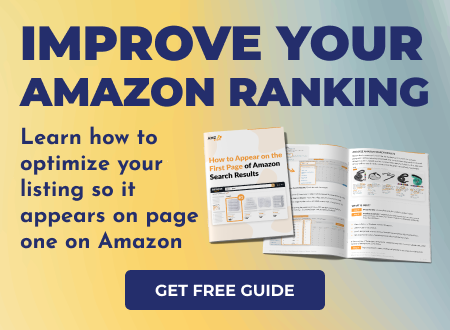
3. Analyze the product:
1. Download the AMZScout PRO AI Extension.
2. Open the Extension
Amazon will open automatically once it is installed
Begin a free trial. If you’re new, you will see a sign-up form. Enter your details and start the trial.
Look for a product or niche that you researched in step 1.
Once you have the results, click the AMZScout icon in the lower left corner of your screen to open the extension.
3. Review both the product and niche. When looking at this tool I focus on price, sales, and reviews. I also look for a low saturation score and a high niche score.
4. Decide between products:
If I’m trying to decide between a few different products, I like to use the FBA Calculator to see which one will be most profitable.
1. Open the AMZScout PRO AI Extension on the search results page of a niche you are interested in.
2. Calculate estimated monthly profit.
Click the row of an interesting product to open a new set of tools.
Choose Profit Calculator.
Enter your product data including sales price, item cost, etc.
Go to Alibaba to get some cost estimates for the products, then enter those numbers in the calculator to see your profit margins.
Check the projected monthly profit.
My favorite features of AMZScout tools are:
The quick Reverse ASIN search for finding a market’s main keyword.
The on-page data blocks (Quick view) that allow me to grab information quickly about products in the market.
The Saturation Score in the chrome extension. I want to find what other sellers are not looking for.
The average time you need to find a new product
Depends entirely on the market at the time. Sometimes you can find something incredible within 30 minutes, other times you could spend hours and still not feel confident about anything. Timing is quite critical and so continuous research is just as critical.
There are new products all the time and then there are new versions of those products being created all the time. Each is like a wave, you want to catch the wave while the swell is building NOT once it has broken. Again, that might relate to a newer version of a certain product and so this is what you want to monitor and also speak to manufacturers about.
Catching the swell at the right time will allow you to generate a lot of sales early on, build reviews, and then solidify your ranking on that wave. It’s much harder to catch a broken wave.
How much can you make?
This is really what makes selling on Amazon a great business idea. As you’ll see below, if done right you can easily make a full-time income from this type of business.
How long did it take to achieve a stable monthly income?
I would say 12-18 months but I would rather answer this in terms of sales than time as below. You need time to make mistakes, learn from them, and apply what you’ve learned. Even then, I would say, you don’t want to put your business under too much pressure by withdrawing too much of the profits. I would only consider drawing profits after Order #3 for a product.
So here’s a realistic example:
I will use very similar stats to one of my products.
As a rough example, even with one product, let’s say you manufacture and ship your product to Amazon for $10.
You set your sell price for $32.99.
When your product sells, you pay Amazon $10 in fees.
You run ads, which turn out to cost $2 per product sold, overall.
$32.99 - $10 (Amazon fees) - $2 (PPC) = $20.99 (Disbursed to you)
$20.99 lands in your bank account. If you sell 500 of these every month that’s $10,495 coming in each month.
You keep $10 of that (which you laid out in the beginning to manufacture and ship the product) aside to re-order and you made a $10.99 profit (a 33.3% margin).
Based on 500 sales a month, you’re making a profit of $5,495 every month while still re-ordering and keeping sales going. This is then scalable to other products. Some might do 200 sales a month, some might do 1,000 sales a month but this should give people an idea.
One of the biggest misconceptions I see is this notion that you need to have 100 SKUs to be making a decent income. The truth is that the net income from a single strong product can replace the income of a top-earning CEO.
This is why I always steer people towards taking their time, choosing the right, designing like crazy, and charging a justified premium on a single product to start rather than trying to launch a number of lower sales, lesser-developed products in the beginning.
Each ASIN also has a lot of start-up costs. Just think about product design, supplier relationships, GTIN codes, and building listings. This all takes time, so why not rather focus all that in on one, a very good product to start.
What should you know before getting started?
Here are a few more things to consider before you start selling:
Investments
You need capital to fund the first order and a 30% buffer on top of that. So in the above example, if we started with 500 units, that would cost us 500 x $10 = $5,000. Then we add a 30% buffer ($1,500) for a total of $6,500 for that specific situation.
The reason you want the buffer is that you are going to be paying for ads and your Seller balance will be $0 at this point but also you want to re-order before selling all the stock. The supplier will want a 30% down payment, this allows you to easily do that and then you sell the rest allowing you to easily fund the final 70% payment.
You don’t have to have $6,500 to start but use this same principle for your product.
Time spent on the business
Time spent on the business really depends on the stage you are in. If you are busy with product research, product design or discussing manufacturing with suppliers, you could spend 10 hours per day doing this. Once that product is up and selling though, with the help of FBA, you could spend 10 minutes a day checking everything is in order.
Register a company
I always choose to run businesses as registered companies. This provides you limited liability, personally, if things go wrong and have a myriad of other financial advantages.
And a bit more
You also are going to need:
Internet
A seller account (I recommend a PRO Seller Account)
An Alibaba account
Product research tool/s
Skype and/or WeChat for supplier negotiations
Creativity and a research ability so you can improve/innovate
A brand name
GTIN codes which are called UPC’s in the US or EANs in Europe (I recommend GS1 codes)
Multimedia and copywriting expertise for listings whether in-house or out
Designing, manufacturing, and shipping
During product research, I am already considering these aspects. Can the product be bettered? Can I improve it in a visual way so it stands out on the front page?
Designing
Choose a product where you can improve or fix it and this improvement or fix is something the market wants. You can work out exactly what customers want by looking at the 3 and 4-star reviews for statements like “I love the product BUT I wish it had….” and that is your cue on how to better this in a meaningful way.
Also look at 5-star reviews though, as you want to retain the most loved aspects of a product. Once I have an idea, I like to draw out that main image. Is it enough to create intrigue and demonstrate more value or address common concerns of browsing customers? Could it be “the choice”?
Manufacturing
I like to reach out to multiple suppliers on Alibaba, it could be 6 or 7 suppliers of the base product I wish to develop further. I aim for Gold Suppliers at a minimum but prefer Verified Suppliers.
The best is a Verified Supplier which has the Business Type of “Manufacturer” in their Business Information section. They can often provide lower costs and more intense changes to products than “Trading Companies.” I vet their speed of response and English proficiency.
I want someone who wants my business and who I feel will be easy to work with. I want a long-term business partner rather than just a supplier. I will narrow down to a few, maybe 3 or 4 of these suppliers at this point, and share my ideas.
Some will be able to perform such changes, others will not or may have exorbitant costs for doing so. Usually, I am down to 2 or 3 at this stage. If they can do what I am looking for, I will order samples from each.
I ship all the samples locally to a company in China called UniTrans. When they have all the samples, they package them into one box and send that to me in one international shipment. This saves on cost. I vet and test the samples and always choose the highest quality regardless of costs.
I am not just looking at product performance but also aesthetics and packaging quality, the opening experience, even cardboard thickness, etc. I am in this for the long-term and don’t need negative reviews destroying the listing after a few months.
I reach out to all the manufacturers and inform them if I will be moving forward or not. I prefer doing this than leaving them hanging because there may be a time I need to transition to a new manufacturer and I want to retain that relationship. I also inform the winning supplier.
At this point, I will spend weeks if not months designing the product exactly as I want. If it’s very complex, I will have them ship me a custom unit before the mass order begins but in a lot of cases, images are enough. We can then negotiate the specifics on cost as well as the payment terms. At a minimum, I want payment terms of 30% upfront followed by 70% on completion prior to international shipping.
I like to use the manufacturer’s partnered freight forwarder where applicable. They get amazing rates and this streamlines the process. To this end, I prefer a DDP quote. This includes the manufacturing and shipping of the product, even customs, all the way to the FBA warehouse.
Shipping
Once we agree, I will pay 30% and we begin manufacturing. This is also a good time to list your product and begin building the listing.
I then also provide them with an important label. The FNSKU. I download this from the Amazon listing by clicking “Print Item Labels” in the Edit dropdown next to the listing in Manage Inventory on Seller Central. The manufacturer should apply this to every individual product for free. It’s good practice to provide this during manufacturing so they can work it into the workflow.
When we are nearing completion of the manufacturing, I ask the supplier for the following:
Estimated Ship Date
Ship From Address
Number of Units per Carton
Number of Cartons
Size of Cartons
Weight of Cartons
The shipping company (DHL, FedEx, TNT, etc.)
These details provide me with all I need to successfully complete a Shipping Plan on Amazon. On a side note, If this is a shipment of one type of product, I prefer to create "Case Packed" shipping plans on Amazon as opposed to “Individual Products” shipping plans, so I always ask the supplier to pack the same number of units in each carton.
This is a requirement to do “Case packed” and allows faster receival at Amazon’s fulfillment centers. Once I complete the shipping plan, I can provide the manufacturer/freight forwarder with a couple of important details:
The FBA carton label - If you have 10 cartons, each must be affixed with a unique label
The “Ship To” address which will be an Amazon fulfillment center
The FBA ID/Shipment ID
I walk through a shipping plan in this video:
On completion of the order, I pay 70% and the manufacturer/freight forwarder will ship the product. I will then mark my Shipping Plan on Seller Central as “Shipped.” Now we wait for the inventory to arrive and become available.
Start selling
Here are the steps you should take to get started:
Choose your entity type (Individual or Company): It’s recommended to register a business, but you can sell as an individual if you like.
Choose your Amazon market: Amazon sells products all around the world. I recommend selling in the US, as that’s generally the most profitable.
Create an Amazon account: Check out this blog post for more information on this step.
These first 3 steps are straightforward for some while a bit more complex for others.
Dig into product research: Take your time and use AMZScout’s tools to choose one outstanding product
Develop your product: Find a quality supplier and work with them to develop a product you’re happy with.
Create your listing: Click here for a detailed guide on the right way to build your Amazon listing.
Use SEO to optimize your listing: Include the right keywords to make sure you show up in searches. Read this post to learn how.
Promote Your Product: Use Amazon ads to drive traffic to your listings. Check out this guide for more information.
Is it worth it?
If you’re in camp 1 and passionate about bringing new, innovative products to market, then yes. If you’re in camp 2 and looking to do this to earn an extra buck, viewing this as a “system” or a “game” and wanting every last grey hat tactic to push your “me too” product up the rankings, then no.
One thing I can absolutely promise you is that at some point, things are going to go wrong. If you’re in camp 1, you’ll weather the storm. If you’re in camp 2, you’re going to throw the towel in and blame the “system.”
The one thing I would like to say is that I am now involved with a variety of business models and Amazon FBA is one of the toughest for sure. Do not launch “me too” products. You have to approach this as above, like bringing an innovation (to some degree) to market. That’s what customers want, that’s what they’re going to buy, that’s what’s going to impress them, that’s what builds reviews, that’s what’s going to lead to success.
We’d like to give a big thank you to Dan for taking the time to provide this valuable information to our readers.
Dan has found more and more fulfillment in educating other sellers. His no BS, no hard-selling approach focused exclusively on the private label has separated him from much of the “guru” crowd and is strongly attested to by his 13,500 subscribers on YouTube, where he shares for free.
If you’re new to selling on Amazon, or you’d just like to learn more, Dan is a great teacher and mentor. We can’t recommend him highly enough. If you have any questions make sure to check out his YouTube channel.

